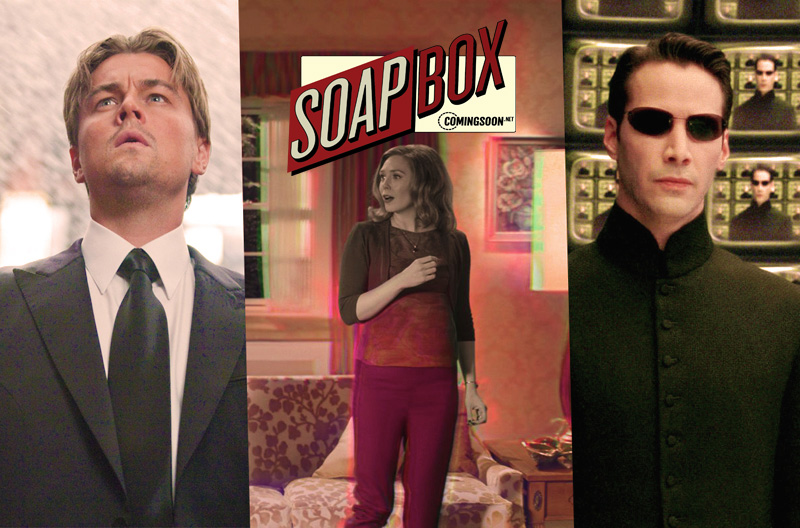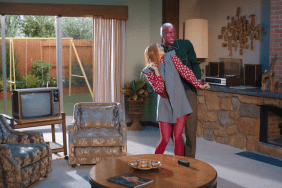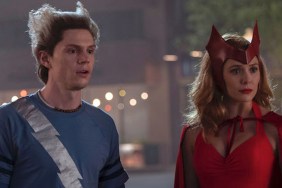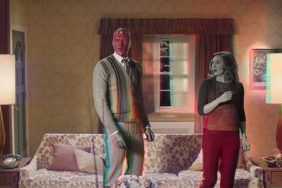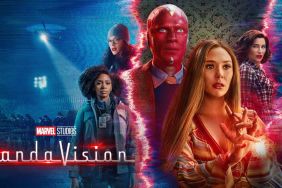In 1969 the famed sci-fi author Philip K. Dick wrote what was arguably his most groundbreaking and influential novel, titled Ubik. Since his death in 1982 the late writer’s work has become a cornerstone of the genre (the phrase “Dickian” is common parlance) and has been transformed into numerous classic films and television (Blade Runner, Minority Report, Total Recall, The Man in the High Castle), yet Ubik has never been adapted… directly. However, the novel has been cannibalized over the years by many big features including The Wachowski’s The Matrix, Christopher Nolan’s Inception and now Marvel Studios’ hit Disney+ series WandaVision.
Click here to purchase a copy of Philip K. Dick’s Ubik!
RELATED: WandaVision Episode 6: Clues, Predictions & Takeaways
The labyrinthine story of Ubik takes place in the “future” of 1992 and follows Joe Chip, a technician working for a company called Runciter Associates that employs specialized people known as “inertials” whose powers include the ability to block telepaths and precogs (a frequent Dick motif also used in Minority Report) typically to stop them from corporate espionage. Founder Glen Runciter’s dead wife and business partner Ella exists in a state called half-life where her consciousness is still active. The company is hired to send Runciter, Chip and a team of their best operatives to the Moon to prevent psychic intrusion on a lunar base, but a bomb blast kills Runciter and they head back to Earth.
This is, as they say, where the plot thickens. Chip and the team -which includes a psychic girl named Pat Conley who can change the past- find their reality warping and “deteriorating,” with common objects reverting to older forms (TVs become radios, cigarettes become old outdated brands, etc), with their world eventually settling in 1939. The money they use mysteriously has Runciter’s portrait on it. The team members themselves begin to deteriorate and die, but a message from Runciter has an advertisement for a spray called Ubik that Chip uses to stop the deterioration. Each chapter, in fact, begins with an ad for Ubik flaunting a different use for it.
Chip believes Conley is causing this fractured reality, which she admits, only to discover that a being named Jory is actually devouring the team in half-life in order to sustain himself. Runciter was, in fact, the only survivor of the moon blast, with everyone else in half-life. Ella developed Ubik to defend herself and other half-lifers against Jory (who has help from people in the real world), and gifts Chip with a lifetime supply. A strange coda, omnisciently narrated by Ubik itself, reveals Runciter in the real world mourning the loss of his team only to find a coin with Joe Chip’s face on it.
RELATED: CS Video: WandaVision Interview With Head Writer/Producer Schaeffer
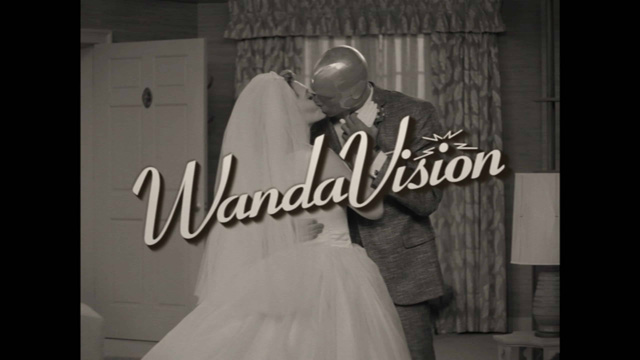
Just from that brief description you can see how the story influenced Lana and Lilly Wachowski’s Matrix Trilogy, particularly the Keanu Reeves character Neo’s journey as he attempts to navigate a “real world” that is not real and can be manipulated. The idea of people living in this alternate consciousness reality while essentially vegetative inside cryo-tubes was another big pull. The predatory character of Jory has a strong tie to the Agent Smith program played by Hugo Weaving, who also uses people within the Matrix itself as saboteurs and informants. Even the film’s somewhat anachronistic production design that pulls from all eras of the 20th century is in keeping with the themes of Ubik.
Christopher Nolan’s Inception pulls a lot elements from Dick’s book, including the team navigating an alternate dream reality, physical shifts in that false reality and Leonardo DiCaprio’s Dom Cobb ultimately not being able to discern if he’s still in the dream world at the end (an idea also employed in the Dick adaptation Total Recall). In Inception there are dream “extractors” as opposed to “anti-telepaths,” and the corporate espionage backdrop is identical. The dead wife being a powerful force within the dreamworld is also a lift. Another big similarity is Cobb’s “totem” (a spinning top) used to indicate if they are still in a dream, which is a coin or money in Ubik.
This brings us to Marvel’s WandaVision, in which showrunner Jac Schaeffer and director Matt Shakman have seemingly found an ideal vehicle for Dick’s ideas, albeit in reverse. Instead of reality reverting backwards, the psychic character of Wanda Maximoff (whose character could be compared to Pat Conley in the novel) has essentially held an entire New Jersey town telekinetically hostage as she reforms both their external and internal realities to fit into the context of sitcom tropes from the 50’s (The Dick Van Dyke Show), then the 60’s (Bewitched), then the 70’s (The Brady Bunch), then the 80’s (Family Ties) and -in this week’s episode- the 90’s (Malcom in the Middle). In each case the sets, cars, clothing and manners of everyone including Wanda shift forward with each new retooling of the town’s reality. Even objects like a surveillance drone reverts to a more 60’s toy helicopter look once it enters the town in episode 2.
Another carryover from Ubik are the interstitial commercials that typically come in the middle of each WandaVision episode and appear to have clues as to what is happening. How these will pay off in future episodes remains to be seen, but there are hints of an evil force behind Wanda instigating and controlling her behavior much the way Ubik (short for “ubiquitous”) inserts itself into the ending of the novel, and which many (including the late author’s wife) say is a stand-in for God itself.
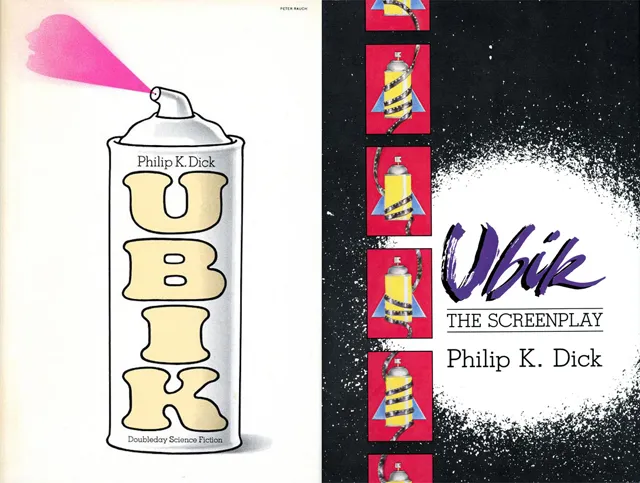
Whether Schaeffer & Co. ever even uttered the word “Ubik” during production on the Marvel series is immaterial, although it would be unsurprising to find out that it was a reference point. The show also takes its fair share of inspiration from other sources like Andrei Tarkovsky’s Stalker and its more recent Americanization Annihilation, along with a hint of Twilight Zone episode “It’s a Good Life.” What is important is that the novel’s lofty concepts have found their most mainstream outlet ever. Even the very nature of the way the show changes its aspect ratios or goes from black & white to color to accommodate the sitcom era it is aping goes along with Dick’s own plans for adapting Ubik under french director Jean-Pierre Gorin (Tout Va Bien), with his unproduced screenplay eventually published in print form. One of the then-radical ideas Dick had to adapt it was that the film quality itself would deteriorate and de-volve from color to black-and-white, then to the jerkiness of early silent movies and finally to darkness.
Since Dick’s death several other filmmakers have attempted to adapt Ubik several times over the decades. Richard Linklater collaborator Tommy Pallotta wanted to produce a version of the book after the critical success of their 2006 Dick adaptation A Scanner Darkly, arguably the most faithful film adaptation of any of the author’s works to date. Linklater had flirted with adapting Ubik before Scanner but ran into rights issues even after attempting his own script on spec. Then in 2011 it was announced that Oscar-winning surrealist filmmaker Michel Gondry (whose Eternal Sunshine of the Spotless Mind has a PKD influence) was going to tackle the book for producers Steve Golin and Steve Zaillian before abandoning it. Even maverick filmmaker and PKD superfan Terry Gilliam (12 Monkeys) has looked into adapting several of his books including Ubik, but found the idea problematic since so much has been swiped from it over the years.
“That’s the problem, so much has been lifted from ‘Ubik,'” Gilliam told us back in 2019. “It probably doesn’t feel fresh anymore to an audience. I’m curious whether Dick would work better now or not. I just don’t know anymore because so many films were made that took the best of Dick in them and played with them.”
In one sense it is sad that we will probably never see Ubik brough to life onscreen because so many other works have already utilized its ideas, but it is also heartening that what was once considered such a far-out sci-fi tale is now being folded into massively successful works of commercial storytelling in both TV and film.
WandaVision
-
WANDAVISION

Kathryn Hahn as Agnes in Marvel Studios' WANDAVISION. Photo courtesy of Marvel Studios. ©Marvel Studios 2020. All Rights Reserved. -
WANDAVISION

Teyonah Parris as Monica Rambeau in Marvel Studios' WANDAVISION. Photo courtesy of Marvel Studios. ©Marvel Studios 2020. All Rights Reserved. -
WANDAVISION

Paul Bettany as Vision and Elizabeth Olsen as Wanda Maximoff in Marvel Studios' WANDAVISION. Photo courtesy of Marvel Studios. ©Marvel Studios 2020. All Rights Reserved. -
WANDAVISION

Elizabeth Olsen as Wanda Maximoff and Paul Bettany as Vision in Marvel Studios' WANDAVISION. Photo courtesy of Marvel Studios. ©Marvel Studios 2020. All Rights Reserved. -
WandaVision

-
WandaVision

Elizabeth Olsen is Wanda Maximoff in Marvel Studios’ WANDAVISION, exclusively on Disney+.
-
WandaVision

Paul Bettany is Vision and Elizabeth Olsen is Wanda Maximoff in Marvel Studios' WANDAVISION, exclusively on Disney+.
-
WandaVision

Elizabeth Olsen is Wanda Maximoff and Paul Bettany is Vision in Marvel Studios’ WANDAVISION, exclusively on Disney+.
-
WandaVision

Elizabeth Olsen is Wanda Maximoff and Paul Bettany is Vision in Marvel Studios’ WANDAVISION, exclusively on Disney+.
-
WandaVision

